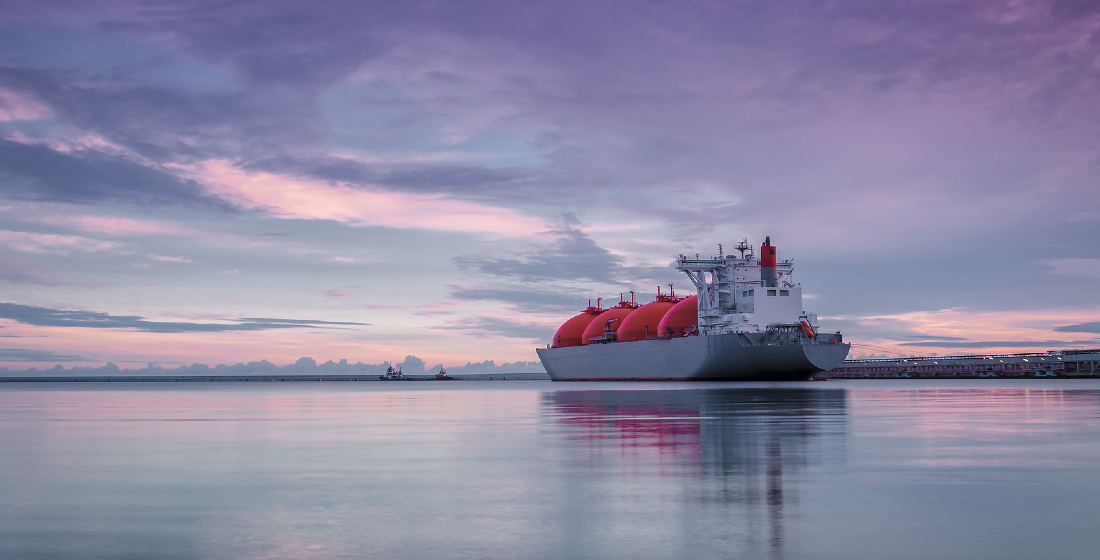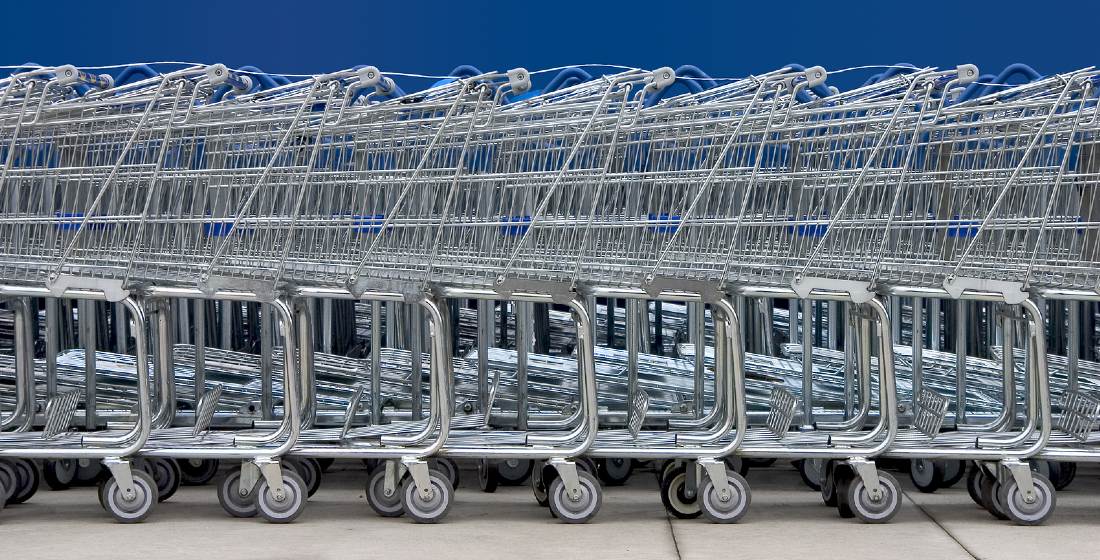LNG tankers: A ballooning ECA space?
ECA-backed non-cruise deals accounted for a total deal volume of $5 billion in the shipping sector in 2021. But that figure is expected to rise as the war in Ukraine drives up demand for LNG shipping capacity and container ships, and amplifies global economic and supply chain headwinds.

Russian state-owned gas supplier Gazprom announced it would cut gas supplies to Poland, Bulgaria and Finland for refusing to comply with a Kremlin decree to pay their bills in roubles earlier this month – putting even greater pressure on European nations to rapidly diversify gas supply away from Russian deliveries.
German chancellor Olaf Scholz responded by stating Germany will build two domestic liquefied natural gas (LNG) import terminals, as the country looks to eliminate dependency on Russian imports by 2024 – just one of several European nations looking to do so.
With the global LNG fleet almost at capacity, expect European ECA-backed LNG tanker deals to account for a considerable amount of export finance volumes over the next few years to meet this rising demand. Especially amid such heightened geopolitical instability.
Moreover, with only 9% of 29 participating banks in this year's TXF export finance survey planning on exiting shipping entirely – including cruise vessels – the most active ECA banks are showing healthy appetite for transactions in this sector. “We expect demand for LNG vessels will increase,” said Navin Kumar, director at Drewry Maritime Research. “The US is replacing Russian LNG cargoes in Europe. The Arc7 vessels will not be economical to run on these routes and most probably the US is never going to use them to ship their LNG. We expect that during the winters there will be fierce competition between Europe and Asia to lift LNG cargoes and hence both LNG prices and LNG carrier charter rates will peak."
Drewry estimate that a prolonged suspension of Russian LPG exports due to the conflict would create an additional vessel demand of 7-10 VLGCs (very large gas carriers) to substitute the Russian cargoes. According to TXF data, ECA-backed non-cruise deals in 2021 accounted for around $5 billion globally, on par with 2019 figures. And some significant LNG vessel orders are already being placed.
For example, Korea is already hosting a miniboom in LNG orders: in 2021, Korea Shipbuilding & Offshore Engineering and Samsung Heavy Industries won orders for 32 and 22 LNG ships respectively. Given that trend – and the fact that other than Kexim, the major ECA shipping debt providers are from the same European states that have energy security angst over Russia – greater European ECA support for the sector will have plenty of political backing.
While South Korean shipbuilders have benefited from surging demand for LNG tankers, rising steel prices have caused a squeeze on shipbuilder margins. The parent firm of Hyundai Heavy Industries has lost $313 million in Q1 2022 and is no longer expecting to return to profitability this year, citing high steel prices. Higher steel plate costs have been exacerbated by the war in Ukraine, which in turn has further disrupted energy markets and supply chains already dislocated in the wake of the pandemic.
Korea Shipbuilding, Daewoo Shipbuilding & Marine Engineering and Samsung Heavy Industries – the three largest Korean shipbuilders, which control more than 70% of the global LNG tanker production – reported around $3.5 billion in combined operating losses for last year. And according to shipbroker Clarksons, prices for building vessels have been rising for more than a year and are up more than 26% since November 2020 to the highest level in nominal terms in 13 years. But despite the rising costs of producing LNG tankers, their necessity to European energy security will ensure order books remain healthy, and that eligible loans receive ECA cover.
Netting a profit
LNG tankers are just one of the many segments of the ECA-backed shipping sector experiencing inflated demand and headwinds alike. Container vessels were, and remain, the cheapest and easiest way to transport goods and during the pandemic all kinds of goods were in demand as lockdowns drove demand for electronic and other manufactured goods. This in combination with supply chain disruption pushed freight rates to record highs. In April 2020, shipping a 40-foot container would cost over one thousand dollars by September 2021, it would set you back over ten thousand green backs.
By the end of 2022, the container-shipping industry will have earned a staggering half a trillion dollars of operating profit from two years of supply-chain misery, estimates Drewry. The increase in bunker prices will likely put further upward pressure on freight rates, which currently sit in an already historically high market at around seven-and-a-half thousand dollars. Moreover, container network inefficiencies and widespread port congestion and inland bottlenecks are also big factors supporting freight rates. In short, the current inflated rates are non-demand related.
“Due to uncertainty a lot of shippers booked extra capacity to avoid shortages of capacity,” said Kumar. “This was not because there were fewer ships, this was because the ports which were handling these vessels were experiencing outages because of operational inefficiencies, causing massive congestion outside the ports. Due to uncertainty, you never knew whether the vessel would arrive on time, so people started sending out orders and started ordering in advance, they were maintaining bigger inventories, and that resulted in huge demand for container capacity.”
TXF data recorded two landmark deals in the shipping finance sector in 2021. Seaspan's $1.6 billion ECA-backed JOLCO financing 18 containerships of its newbuild programme is a first-of-its-kind, comprising two deals: one backed by K-Sure and Kexim, and the other by Sinosure. The JOLCO structure is an attractive source of financing for shipowners allowing them to syndicate the equity via Japanese equity investors (longing for yield and diversified fixed asset investments) with a lower capital cost compared with the shipowners’ own cost of equity.
JOLCO structure can only kick in at vessel delivery and can kick out during the financing tenor at the option of Seaspan. From lenders’ perspective, JOLCO is also an attractive structure as it generally entails a much faster pay-out profile than traditional commercial lending structures. In the 40-year history of JOLCO structures, an ECA financing and a JOLCO have never been successfully combined in shipping until this deal.
The vessels from the Korean shipyards are LNG dual fuelled brand-new containerships and meet the EU taxonomy criteria for energy efficiency (EEDI). Indeed, the financing documentation incorporates all requirements with respect to the Poseidon Principles.
Maintenance, maintenance
An overlooked section of the market is also the shipping and maintenance services associated with offshore wind and is a neat demonstration of the challenges to decarbonising shipping, says Valentino Gallo, partner at Javalyn Partners.
“In this segment of the business you have the very big, very sophisticated vessels that are utilised for the erection and the transportation of the wind turbines, some of which can reach 300m high. Those vessels are still using traditional fuels. There are also smaller vessels that are utilised for operation and maintenance over several years, these are eclectic boats.”
With industrial-scale hydrogen years away from commercial viability and battery technology incapable of propelling anything much bigger than a small ferry, the industry is left with traditional fuel oils or LNG /dual-fuel solutions.
Evolution or revolution?
What fuels these large vessels now becomes increasingly important – if not essential – to the financings of new builds. Indeed, financiers are under increasing pressure from different government and non-government bodies to ensure that they offer green financing, which is “not entirely possible in shipping,” says Kumar. “More shipping companies are required to demonstrate that they are improving on their carbon neutrality rules and the better your performance in the last five or six years, the better the chances of getting financing at attractive terms.”
An engine, of course, cannot become efficient overnight. Options now for large vessels include retrofitting to, opting for cleaner fuel oil, LNG or and LNG fuel oil hybrid. Hydrogen power, at present, is simply not commercially viable for large vessels, and as such many have placed their faith in LNG, but Kumar is sceptical that this is the right path for the whole industry.
“One, if you want to go for LNG retrofitting it costs a lot of money. Two. It's not swift. It'll take your vessels off the water for almost two to three months. And three, there's not adequate LNG bunkering infrastructure available across the world. So, it's not a straightforward choice. Moreover, it might not work out for older vessels and it's these older vessels that are at risk of failing these standards – so for them, the only option that is left is to slow steam. That is economically not very conducive for business if the demand is strong and earnings are good.”
It's important to remember that both fuel oil and LNG are both fossil fuels, with LNG widely touted as a transitional fuel, not an end in itself. This could make second hand financing particularly tough in decades to come. The average economic life of second-hand vessels could previously be considered to be 25 to 30 years. This is no longer guaranteed.
“There is a high probability that somebody bought a vessel at 10 years and because of noncompliance, the economic unviability of the asset or the cost of becoming compliant, the vessel may need to go for scrapping much earlier,” said Kumar. “Even banks and financiers are insisting now on engine efficiency specifications, their ability to comply with emission control norms etc, which earlier was not on their priority list.”
Consequently, powering your ship with a very efficient fuel oil engine, or even a dual-fuel engine, is no guarantee you will comply with these kinds of regulations in perpetuity. In short, the question facing buyers and financiers is one of evolution of efficient fuel oil engines or revolutionary LNG powerpacks. As fuel oil and LNG technology mature alongside one another, different players are being forced to bet on different horses as regulation ratchets up.
The Energy Efficiency Existing Ship Index (EEXI) is a regulation introduced by the IMO in June last year to reduce the greenhouse gas emissions of ships, a mandatory measure related to the technical design of a ship. From 2023, ships are required to calculate their EEXI following technical means to improve their energy efficiency and to establish their annual operational carbon intensity indicator (CII) and CII rating. Carbon intensity links the GHG emissions to the amount of cargo carried over distance travelled.
Ships will get a rating of their energy efficiency (A, B, C, D, E - where A is the best). Administrations, port authorities and other stakeholders as appropriate, are encouraged to provide incentives to ships rated as A or B also sending out a strong signal to the market and financial sector. A ship rated D for three consecutive years, or E, is required to submit a corrective action plan, to show how the required index (C or above) would be achieved.
Since the energy efficiency requirements have become stricter over time, most of the older existing global fleet will not meet the new EEXI requirements, and depending on a vessel's age and prospects, some owners and operators may even be scrapping them earlier than envisioned.
“There's a possibility that we may see a lot of demolitions around 2025,” concludes Kumar.
For those mulling over purchasing decisions questions remain. Is it feasible to retrofit clean technologies? Not without significant cost. Is the payback time going to be short enough? Unlikely. Are clean technologies becoming affordable fast enough? Yes - but there is still a long way to go. And lastly, are we better off with ships designed to be retrofitted later on? Time to place your bets.





